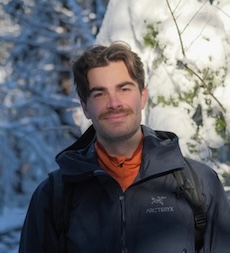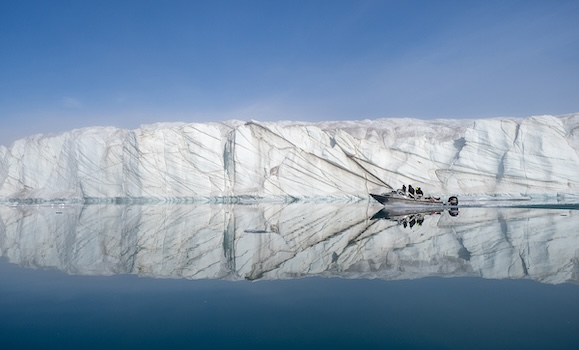Small boats, big glaciers.
Four words title a captivating image from PhD student Patrick White, one of just 20 finalists in the latest edition of the Science Exposed competition organized by the Natural Sciences and Engineering Research Council of Canada (NSERC).
The competition seeks to answer the question, “What does research look like?” From microscopic fossils and microplastic particles to sea spider legs, sea slugs, and fungi, the photographs are intended to prompt scientific discission, education and knowledge dissemination.
The research
Мэ
 Patrick started his PhD in January 2024 working with Dr. Erin Bertrand in the . He’s studying how the Artic Ocean is changing and how these changes affect the broader ocean ecosystem, building on research from his master’s where he studied how glaciers shape ecosystems in the Canadian Arctic.
Patrick started his PhD in January 2024 working with Dr. Erin Bertrand in the . He’s studying how the Artic Ocean is changing and how these changes affect the broader ocean ecosystem, building on research from his master’s where he studied how glaciers shape ecosystems in the Canadian Arctic.
“Most people understand the Arctic is changing quickly,” says Patrick. “As it warms, sea ice is disappearing. Glaciers are melting and fertilizing the ocean. My research looks at how this affects phytoplankton – the tiniest ocean organisms that, through photosynthesis, produce food for the rest of the ecosystem.”
Patrick conducts his fieldwork in Grise Fiord, an Inuit hamlet on the southern tip of Ellesmere Island in Nunavut’s Qikiqtaaluk Region. The community is 1,160 km north of the Arctic Circle, where in the peak of summer or winter it can be light or dark, respectively, for 24 hours a day.
Мэ"The Arctic Ocean and Canadian Arctic Archipelago are gateways to the North Atlantic. The water that is coming down through the Arctic mixes with other currents and over time, becomes part of the water we see off the coast of Nova Scotia. Understanding what's happening here, especially as the ice starts to melt, could impact fishing, global shipping, and more."Мэ
The moment
Мэ
Patrick remembers the day he took his photo.
“We were planning to go to Jakeman, a big glacier about 1.5 hours away on Ellesmere Island. МэIt was really foggy, so we weren’t sure if we were going to go. When we did go, the boats were full, we were navigating through packed ice, and visibility was maybe 50 meters in front of us.”
Then everything opened up.
“It was honestly one of the most magical moments I've ever had in my life. That photo makes me think of how everything lined up perfectly for this really incredible moment.”
.
Мэ

Glaciers in the Canadian Arctic are retreating rapidly due to climate change. My research explores how marine-terminating glaciers—glaciers that extend into the sea—affect marine phytoplankton, the microscopic organisms that form the foundation of ocean ecosystems. This image shows one such glacier behind a boat owned and operated by Ausuittuq Adventures. Collaboration with Inuit experts enables safe navigation and sampling near these glaciers. This collaborative research will help us understand what role these glaciers play in shaping ocean ecosystems and improve predictions about what might happen as they inevitably retreat and disappear.

